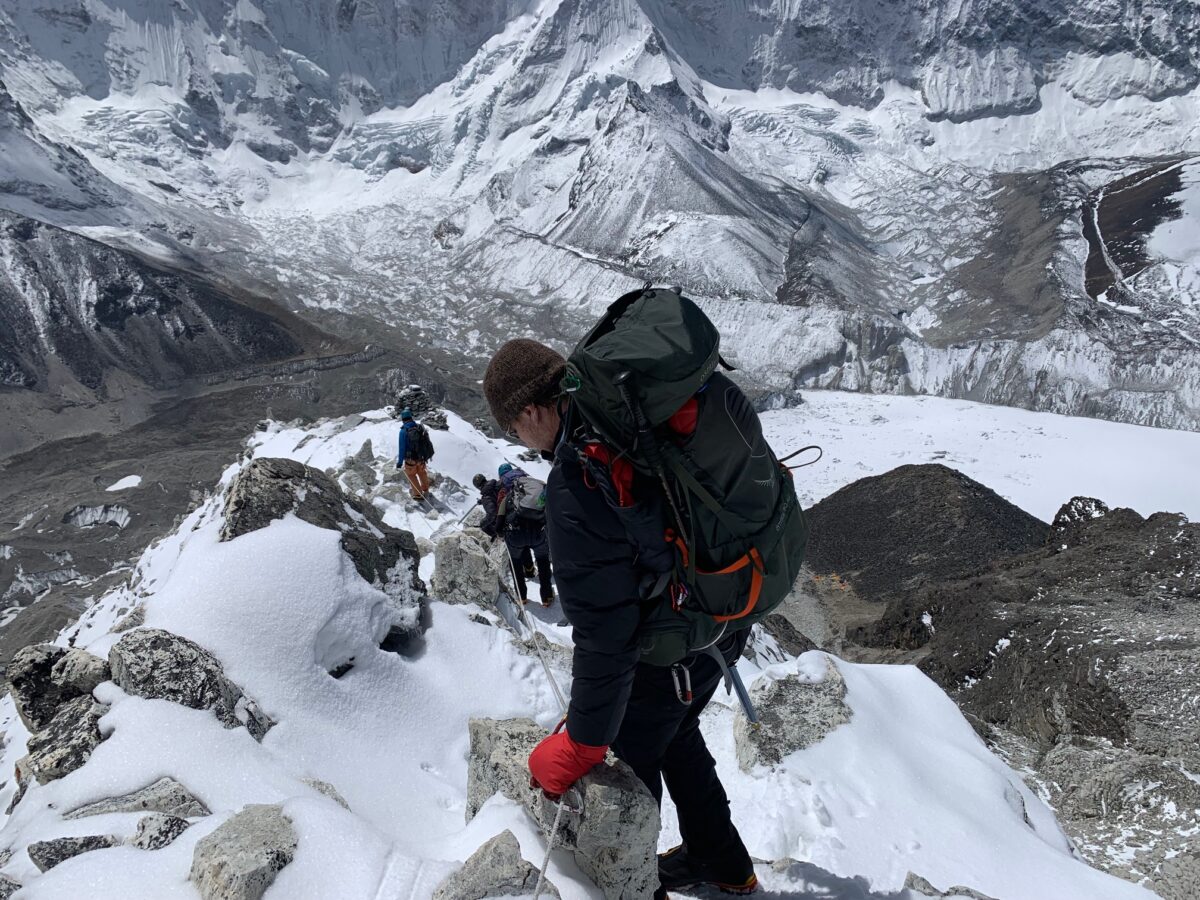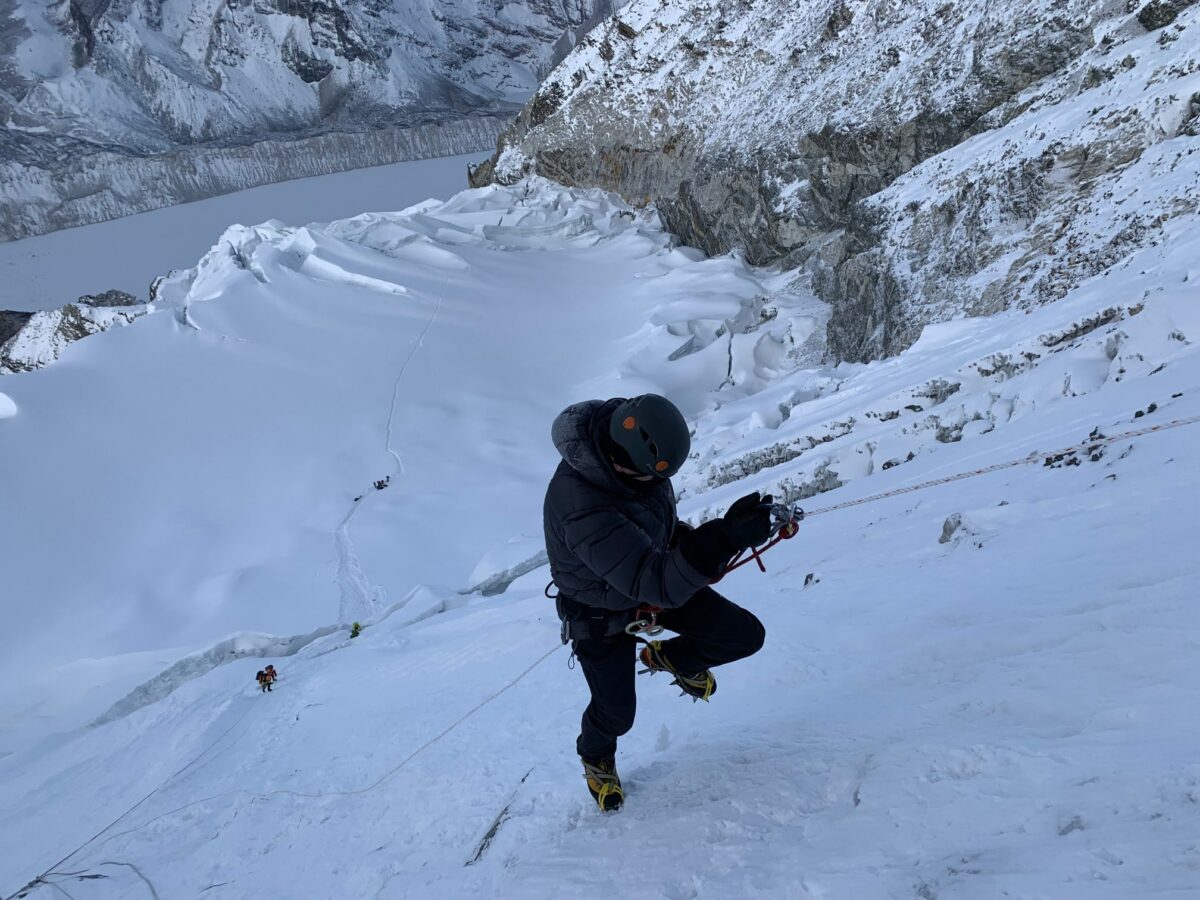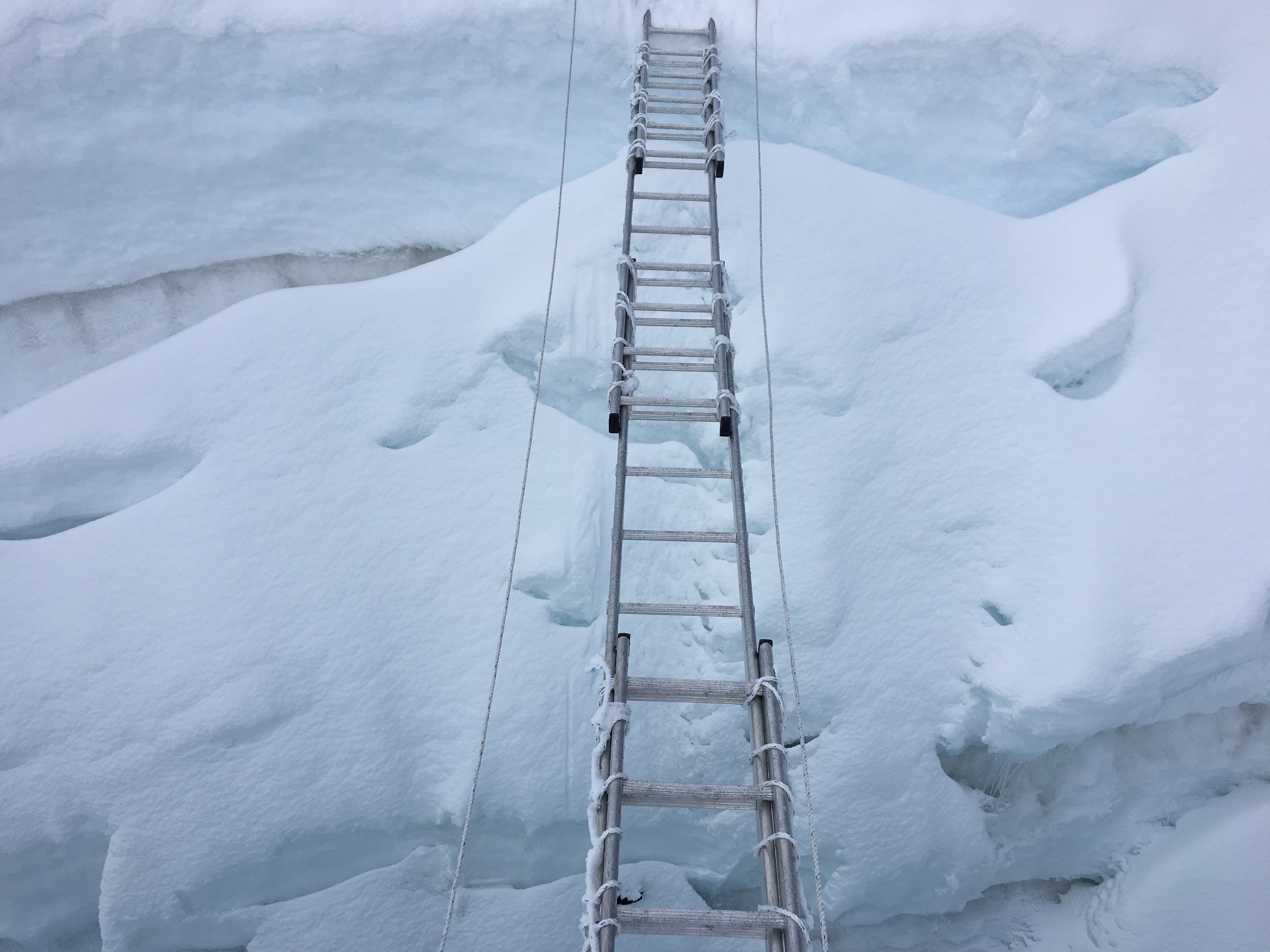Check out our Top 10 Tips for Island Peak. I have climbed Everest and Island peak 20+ and happy to help you understand the challenges on mountain. Drop me an email. Island peak is highly underestimated by so many people. Check out our REVIEWS.
Island Peak Deserves Respect
If you want to climb Island peak and stand high in the Himalaya’s at 6,189m/ 20,305 feet, then you need to give this mountain the respect it deserves. This means you need to come with excellent physical preparation and mountaineering skills to match.
We are a world leader in offering quality Island peak climbs and have developed an itinerary, service and system to give you the best chance at the summit.
Tips for Climbing Island Peak
These are our Top 10 Tips for Island Peak, but for all our tips and advice GET IN TOUCH more about our Island Peak service. Ian Taylor Trekking use the High Camp on the mountain and have two additional nights in Island Peak Base Camp.
Most importantly, we fix our own ropes on the mountain, giving you the best possible safety and chance of making it to the summit of Island Peak. CHECK OUT our Island peak itinerary. Our Award Winning team are available 5 days a week to help you get the right information.
The Island Peak Advice
We have added some useful links below that will aid in your planning and preparation for your trek to Everest and Island Peak climb. We have successfully led hundreds of people through these majestic mountains on their way to Island Peak.
The following tips and links will aid in your preparation for the trip as well! And if you want to learn more about climbing Island Peak, don’t hesitate to CALL US and find out everything you need for your specific expedition.
1). Make Sure you Have the Right Training
Island peak is steep from Base Camp 5,100m/ 16,732 feet to summit 6,189m/ 20,305 feet. The route has mixed scrambling, steep rocky scree, a glacier crossing with ladders and a steep Head-Wall all the way the summit. It is a very strenuous ascent, and that is after you have just walked for 12 days to the base of the mountain, which is also strenuous. We can help you formulate a training program if you join our team!
Multi-day hiking, building from 3 – 6+ hours, with weighted backpack, along with training 4 to 5 times a week in the gym is essential. Using a machine like a stair master with your weighted backpack on and building your endurance is key to success. You need to be doing stability and weight training. Don’t forget the downhill. You also need to be competent in abseiling using a figure of 8, moving between fixed lines on a 60 to 70 degree angle. This is really important. The video above will give you an idea of how difficult the terrain and gradient is on Island Peak and show you that you will need a proper training plan and acclimatization schedule to match. CLICK HERE for our top 10 tips in preparation for the trekking section to Everest base camp.
2). Buy your own Mountaineering Boots Early
If you have ever worn mountaineering boots before, then you will understand what I mean here! Mountaineering boots are extremely rigid and heavier than your normal trekking boots, making them a lot more difficult to walk in. It is essential that you have worn-in your boots before you go, and also that you pick the correct boots. Your feet are so very important to your success on Island Peak, and you need to look after your feet at all times in the Himalaya’s.
Island peak base camp is 80 miles from a road, you are in a wilderness area and need to be fully prepared with the right boots. This is not the place for you to test out your mountaineering boots. Likewise, we strongly advice against renting mountaineering boots. Having the wrong boots or renting boots could ruin your feet and your trip.
3). Complete our Island Peak Training Course
We highly recommend taking a specific technical training course. We run specific training courses for Island Peak in Colorado and Scotland. It is a very important part of your training before leaving for Island Peak. Being able to abseil/ rappel using a figure of 8, using crampons, a jumar (ascender) and being comfortable in a harness and using ropes can make all the difference in feeling confident in your Island Peak ascent and descent. We also recommend crossing ladders with crampons in your training.
Check out our winter courses in Scotland and get in touch for further information for our courses in Colorado. We can help you fully prepare for your climb on Island Peak. VERY IMPORTANT: You need to come proficient in using a harness, figure of 8, using a Jumar device and abseiling. This is one of the most important of our Top 10 Tips for Island Peak.
4). Have the Right Clothing and Gear.
With temperature ranging from + 20c to – 15c (68F to 5F), you need to come prepared. Once you arrive in Island Peak Base Camp, there are no lodges, therefore you will be sleeping in tents, out in the elements. Having the right gear can be the difference in a successful and unsuccessful trip. One of the essential pieces of gear will be a high quality down coat. You will need to wear this down coat in the mornings and evenings as well as during your summit attempt.
Wearing high quality base layers is another way to ensure you are managing your body temperature. We like to recommend Merino Wool as a great option for base layers, however they can be quite expensive, so if you are not looking to spend that much on your layers, you could also look at synthetic pieces. You should stay away from anything cotton against your skin. Cotton will be very difficult to dry and it will also not help with regulating your body temperatures.
The most important items for Island Peak will be your mountaineering boots and gloves. Keeping your hands and feet warm is extremely important. CLICK HERE and watch our Island Peak packing video. If you sign up to one of our trips we send you a 35 page dossier with itemized kit list. READ SOME REVIEWS.
5). Manage your Safety Throughout the Trip
The trail to Island Peak comes with some hazards. You need to be aware of these prior to making this journey. Our guides will lead you safely through the trail but always be aware of landslide regions, drop offs, people, yaks, and mules. Always stay on the mountain side of the trail when passing or being passed, and constantly be aware of your surroundings. CLICK HERE for our top tips while you are on the Everest trail towards Island Peak. Always wear a helmet above high camp as there is potential rock fall. You need to take personal responsibility for your own safety and be mindful of your surroundings.
6). Have Qualified Climbing Guides
Unfortunately, there are a lot of local guiding companies out there that offer Island Peak climbs who are not qualified to do so. Many companies out there will promise you the world, however they outsource their services to guides in Dingbouche and Chuckung. These guides have limited climbing experience and will not have the ability to fix ropes or manage clients at high altitude. You need to make sure you have done your research on the company you will be using. You should have a professional climbing Sherpa who can fix ropes, manage training in Chuckung and Island Peak Base Camp, bringing you safely up and down Island Peak.
We bring our own ropes up the mountain and fix them each trip for your safety. Therefore, we do not use the ropes that are already fixed to the mountain. These ropes that are already there are used by too many people. They are not checked regularly enough to be safe in our opinion. We also use a high camp at 5,500m/ 18,045 feet, which gives you the best possible chance at a safe and successful climb to the summit of Island Peak. READ MORE about safety and what you need to climb Island peak.
7). Have the Right Acclimatization Schedule
When you are going above the danger zone and lower realm of the death zone at 5,500m/ 18,044 feet to 6,189m/ 20,305 feet, you need the right acclimatization schedule. We have 3 nights acclimatizing in Namche Bazaar at 3,440m/ 11,300 feet, 2 nights in Dingbouche at 4,350m/ 14,271 feet, an additional 2 nights at Island Peak Base Camp at 5,080m/ 16,666 feet. Additionally, we also have one night at Island Peak High Camp at 5,500m/ 18,044 feet.
Altitude sickness is real, and going to altitude needs to be respected and not forced. Take your time and acclimatize well. This will help you to achieve your goal of climbing Island Peak. Also, you will enjoy a safer and more enjoyable experience. CONTACT IAN for more information.
8). Have Previous Altitude Experience
There is a massive investment that you have made to do Island Peak. You have spent the money, time, and preparation to go all the way to Nepal and climb. Everyone acclimatizes differently, therefore, knowing how you adapt at altitude helps you in your understanding and preparation for this climb. Having made numerous treks and possible climbs at altitude will help you in your preparation for Island Peak. How do you know what it is going to be like at 5,000m/ 16,404 feet and above, with 50% less oxygen, if you have never been at this elevation before? Be responsible and take the right path to 6,000m/ 20,000 feet peaks.
9). Know Your Knots
When you are climbing Island Peak, you will need to know how to tie different climbing knots. The figure of eight, overhand knot, Alpine butterfly and Italian Hitch knots will be used in the training and preparation for Island Peak. Therefore, it is best if you know these and have practiced these knots prior to joining an Island Peak climb. We will have rope with us on the trek in, and we will help you become more proficient on the route to Island Peak.
10). Be Proficient in Rappelling with a Figure of 8
As you will see in the video above, you have to abseil down the Head-Wall of Island Peak. You will be in control of the rope as you abseil down. Therefore, being comfortable with abseiling prior to the start of the trip will be essential. We recommend doing an outdoor course before the trip. This should include learning how to move from one rope to another on steep terrain, using a figure of 8 device. You should also be comfortable with exposure. Therefore, finding a local climbing wall and practice using a harness and abseiling from high, which will help build confidence and experience for when you need it high on Island Peak.
Get in Touch Today
We hope you enjoyed reading our Top 10 tips for Island Peak. The next step should be to CONTACT IAN and get the best information available. Ian has climbed Island peak 23+ times over the past decade and has been journeying to Island Peak since 2008. He has a wealth of experience on this mountain and has climbed Mount Everest to the Top, Kilimanjaro over 40+ times and led over 40+ treks to Everest Base Camp and other treks throughout the Everest Region.













